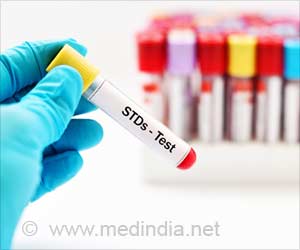In women, sexually transmitted bacterial infection ups HIV risk, shows study.

"Further research will be required to confirm a causal relationship and to identify risk factors for M. genitalium infection in African populations," said Sue Napierala Mavedzenge, Ph.D., a research investigator with the Women's Global Health Imperative at RTI International and the study's lead author.
"If findings from this research are confirmed, M. genitalium screening and treatment among women at high risk for HIV-1 infection may be warranted as part of an HIV-1 prevention strategy," Mavedzenge noted.
First discovered in 1980, M. genitalium is a bacterial STD that causes inflammatory conditions of the genitals and reproductive tract (urethritis, cervicitis and pelvic inflammatory disease). The infection, which may be present for years without causing any symptoms, can be eliminated with appropriate antibiotics.
This study used data from a larger study of HIV acquisition among young women in Zimbabwe and Uganda to assess the effects of M. genitalium on HIV risk.
In the study, 190 women who became infected with HIV during follow-up were matched to women of similar age and risk who did not acquire HIV. Both groups were tested for the presence of M. genitalium, which was evaluated as a risk factor for HIV infection.
Advertisement
The researchers found that after adjustment for other factors, women who initially had M. genitalium were more than twice as likely to become infected with HIV. Certain other STDs were also risk factors for HIV.
Advertisement
The finding has been published in the March 13 issue of AIDS.
Source-ANI















